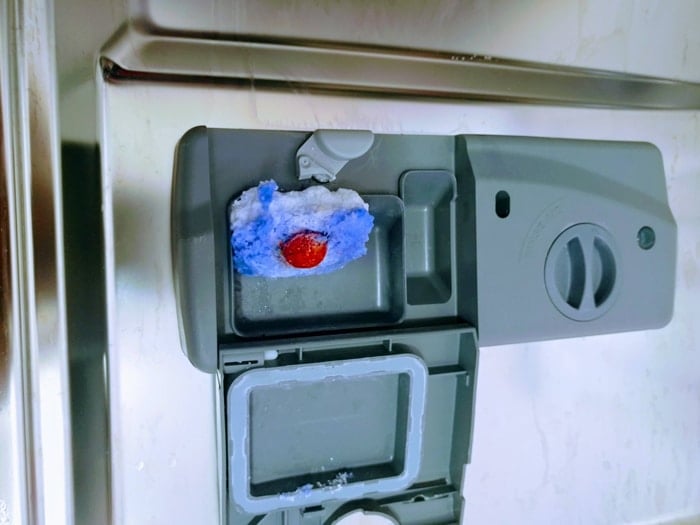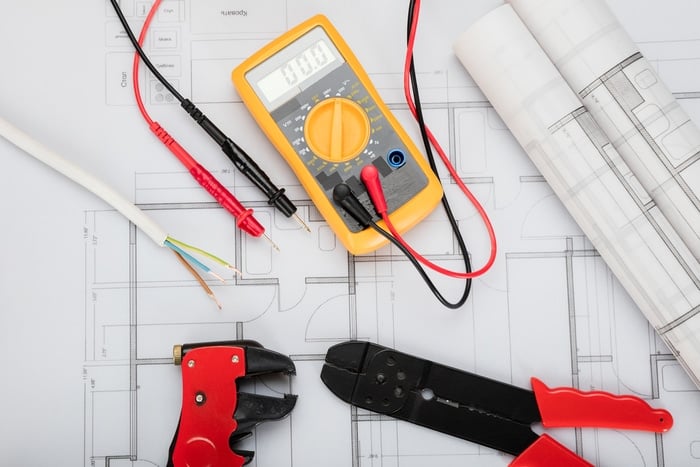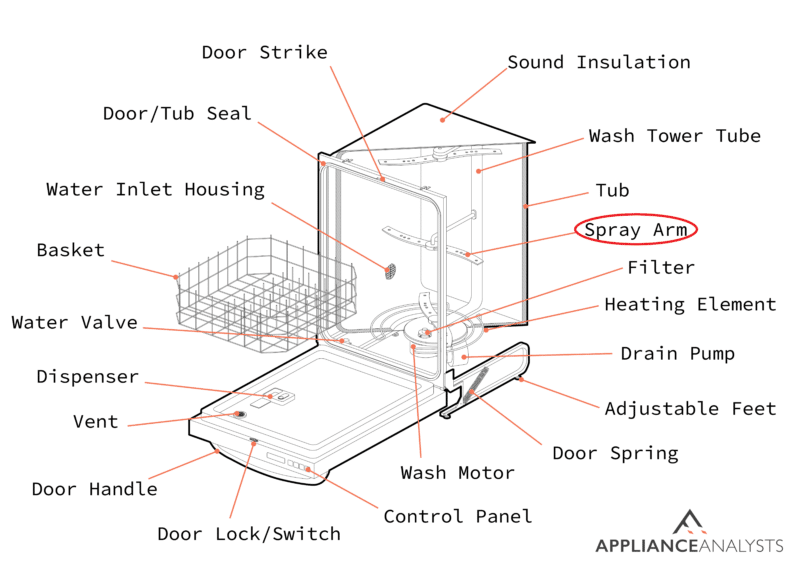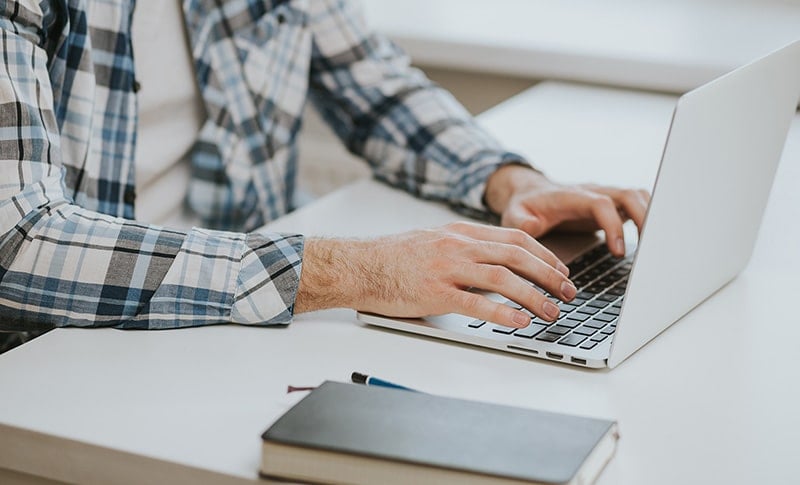We've independently reviewed this article to make sure it's as accurate as we can make it.
To find out more about our article creation and review process, check out our editorial guidelines.
Is your dishwasher pod not dissolving?
Don’t worry; you’re not alone. I know how frustrating it can be when your dishes aren’t coming out perfectly clean and shiny.
Luckily, you’ve come to the right place for answers.
If your dishwasher pod is not dissolving, chances are your water temperature is too low, you have water flow issues, or the spray arms are damaged. A blocked dispenser door can also explain the problem.
Are you ready to learn more? Let’s dive in!
Why trust us? This article was written by Craig Anderson and James Blackford.
Craig has helped thousands of other homeowners repair their appliances since 2016. James is one of our resident appliance experts, with over 16 years of experience. He currently works as a Master Technician for SquareTrade, and runs his own appliance repair business.
5 Reasons Why Your Dishwasher Pods Are Not Dissolving (With Fixes)
In this section, you’ll learn why your dishwasher pods are not dissolving and different ways to fix the issue and get sparkling clean dishes.

Note – For some of the provided solutions, you’ll need to refer to the manufacturer’s manual. If you can’t find yours, be sure to read our detailed guide on how to find any product’s manual online:
#1 The Water Temperature Is Low
In my experience, if your dishwasher pods aren’t breaking down, it’s likely due to the water not being hot enough.
For your dishwasher pods to dissolve properly, the temperature of the water needs to be around 120 F (48.89 °C).
In many homes, dishwashers and kitchen sinks share a hot water line, making it pretty straightforward to estimate the water temperature. Simply place your hand under the running water from your sink.
If it feels excessively hot, and you find yourself pulling your hand away after just a few seconds, it’s a good indication that the temperature in your dishwasher is within the desired range.
You can also use an external thermostat to measure the temperature.
#2 Faulty Heating Element
Your dishwasher has a heating element responsible for enhancing the water temperature further to dissolve your soap pods and clean your dishes effectively.
If the heating element is faulty, the water will not be at the correct temperature; thus, your dishwasher won’t dissolve your pods.
To test the heating element, you’ll need to unplug your dishwasher first. Then, I recommend reading the manufacturer’s manual to access the heating element.

Please use a multimeter and set it to the resistance setting. Then, touch each probe to the terminals.
You should get a reading between 4 and 14 ohms (or the one recommended by the manufacturer).
If that’s not the case, the heating element will need to be replaced. You can do it yourself or call a professional.
#3 Water Flow Issues
If your dishwasher is still not dissolving your pods, there’s a good chance you have water flow issues.
To check if that’s the case, you simply need to switch your dishwasher to a washing cycle. After a few minutes, press the pause button and slowly open your dishwasher door, and see if water is sitting in the bottom of the unit.
If the water seems low, try taking a pitcher of water and adding it to your dishwasher. If the pod dissolved properly with the additional water, then the lack of water was the main issue.
A lack of water can happen if the water supply valve connected to your dishwasher is not fully open or the water supply line is blocked or kinked.
But, if adding the pitcher of water doesn’t solve the issue, then the water flow problem is probably caused by a worn-out motor. Unfortunately, a new motor costs anywhere from $250 to $550, and you’ll need to call a professional.
#4 The Soap Dispenser Door Is Blocked
If you still notice that your soap is not dissolving, then it’s likely that the dishwasher is not releasing the pod due to a dispenser door that is not opening.
There are a few reasons why your dispenser door is blocked or jammed and can’t open. One factor can be overfilling your dishwasher or stacking the dish rack improperly. In such cases, dishes can keep the door from opening during the washer cycle.
To solve this problem, restack the appliance and ensure that no dish is blocking the dispenser door, so your dishwasher can release the pod and dissolve it. Then, make sure that no tall utensils or large dishes are near the dispenser door, which will ensure that there is free movement of the door.
A second reason why the door isn’t opening is that it is getting stuck due to a faulty latch.
A good cleaning of the door and the latch can remedy the situation, but if it does not, a repair is necessary.

If you wish to avoid problems with the dispenser in the future, you can place your pod directly in your dishwasher’s tub, allowing you to bypass the dispenser entirely.
#5 The Spray Arms Are Damaged
Yet another reason your dishwasher pods aren’t dissolving during the wash cycle is that the spray arms are not working as they should.
These are designed to spin around and spray water around the inside of the unit during a wash cycle to dissolve the pod. Unfortunately, loose food particles can get trapped within the tiny holes in the spray arms, resulting in performance problems.
Ultimately, the best way to inspect the spray arms is to take them out and look carefully for any signs of damage. They can be removed in a counterclockwise motion or with a screwdriver.

Then, please soak the spray arms in vinegar overnight and clean them.
But, if the spray arms are indeed damaged, they must be replaced with new ones. Don’t worry – they typically cost around $15-$30.
If you want to get any replacement part – or see how much one would cost – click to enter your model number in the search bar below. Our partners at AppliancePartsPros stock almost every part with free guides on how to install them.

#6 You’re Using Low-Quality Pods
If you’ve tried the five fixes above, but your dishwasher detergent is still not dissolving, I recommend using a different soap.
You see, sometimes dishwasher pods may not be compatible with your dishwasher’s model, leading to dissolving issues.
Check the manufacturer’s manual for recommendations, and try researching different options online. Don’t forget to read the reviews for valuable insights into others’ experiences with the detergent you’re considering.
Click here to check out the Consumer Report’s article on the best dishwasher detergents.
Please note that the effectiveness of a detergent will vary depending on the hardness of your water and your dishwasher’s model.
Conclusion
I hope this article has helped you solve the issue of your dishwasher soap not dissolving.
Remember, if your dishwasher is not dissolving your pods, you’ll need to check the water temperature, heating element, water flow, and spray arms. If there’s a more serious issue with your dishwasher, you’ll require a diagnosis from a qualified technician.
Thanks for reading this short article. If you found it helpful, please check out our other related posts below.









